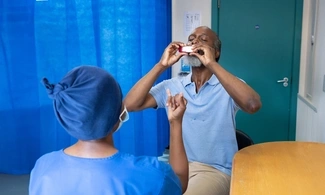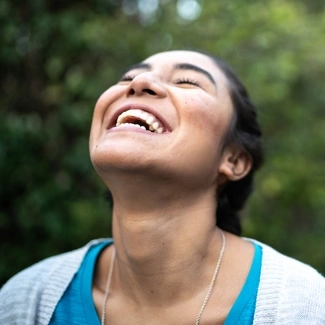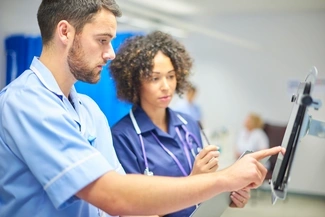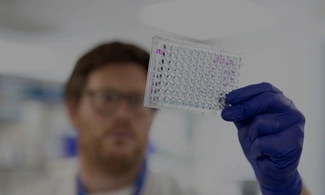Living in poverty with a lung condition doubles the risk of an emergency hospital admission, according to deeply worrying new NHS England figures analysed by Asthma + Lung UK.1
The leading lung health charity is highlighting the numbers as they publish their new report Breathing Unequal – examining inequalities and lung conditions report, which calls on the Government to urgently prioritise lung health and give people who are most at risk a fighting chance of being able to breathe without fear.
The new analysis shows that the untenable cost of living hikes are deepening health inequalities and forcing people with lung conditions to make impossible choices about their health. The charity says the report paints a bleak almost ‘Dickensian picture’ of the lowest earners unable to afford medication, food, rent and struggling to get medical appointments when they need help the most.
The report, based on the charity’s largest ever survey of over 14,000 people with lung conditions, found that of the lowest earners surveyed:
One in four are struggling with breathlessness every day Nearly half (46%) of those who pay for prescriptions said they couldn’t afford to pay for them, compared to just 6% of the highest income group. Seven out of 10 (71%) respondents with asthma live with uncontrolled asthma putting them at greater risk of having a potentially life-threatening asthma attack. Only just over a third (37%) were able to access same-day GP care, compared to half (50.1%) of the highest earners. They were more than twice as likely as the highest earners to give up work in the last year due to breathlessness. Seven out of 10 felt their lung condition has worsened and nearly two thirds (61%) feel that they need more support with their condition now than they did a year ago.
Asthma + Lung UK believes no one should have to suffer worse health because of where they live, or how much money they have.
The charity’s analysis shows a link between growing difficulties paying for basic necessities, including rent, food and medication, and a deterioration in health. Cut backs in every area of life are affecting people’s ability to manage their lung conditions, increasing the likelihood of people developing life-threatening symptoms and being admitted to hospital in an emergency.
Asthma + Lung UK is now calling on the Government to urgently put in place a strategy to improve respiratory care and provide tailored financial support for people on low incomes with lung conditions, to ensure they can pay for basics like energy bills (remove word bills and just have the word energy as an energy bill is not a basic) and prescriptions, helping them to manage their conditions better.
Health inequalities are a long-standing problem, with people in the most deprived communities across the UK being twice as likely to develop a lung condition and seven times more likely to die from a lung condition and the cost-of-living crisis continues to deepen those inequalities.2
From 2021 to 2022, Asthma + Lung UK’s helpline saw a 70% increase in calls from people seeking advice on benefits, prescription charges and help paying for food and fuel, while seven out of ten survey respondents felt that their income has been impacted by the cost-of-living crisis.3
Sarah Woolnough, Chief Executive at Asthma + Lung UK, said:
“Struggling to breathe can be a terrifying and debilitating experience – it’s unacceptable that people living in poverty with a lung condition are struggling to access support when their symptoms get worse and are at greater risk of ending up in hospital fighting for their life. I have heard from people who have said that the cost-of-living crisis is doing irreparable damage to their lungs.
“We should do all we can to minimise the need for emergency hospital treatment, which is why there needs to be a seismic shift in how this Government tackles poverty and health inequalities, as the cost-of-living crisis makes it even harder for people to breathe.
“The government needs to act urgently when it comes to lung health, the UK’s third biggest killer. We are calling on them to take action now to ensure people get the financial support they need, as well as focussing on improving lung health in the upcoming Major Conditions Strategy. Only by ensuring that people with lung conditions can afford life’s basic necessities, get an early diagnosis and access to the treatment and support they need can we reach the point where good lung health and the ability to breathe freely are a basic right enjoyed by all.”
Professor Sir Michael Marmot, Joint President of Asthma + Lung UK, professor of epidemiology at University College London, director of the UCL Institute of Health Equity and past president of the World Medical Association said:
"Inequalities in society manifest themselves in people's bodies, seen most clearly in the lungs. Influences associated with social disadvantage are causes of lung conditions and make it much more difficult for people to manage their illness. This new analysis by Asthma + Lung UK shows that the situation is far from improving: the stark inequality between rich and poor is growing, with people’s lung health deteriorating because they can’t afford the most basic necessities – food, energy bills, rent and even medication. It’s yet another wake-up call for British policymakers and public health experts to take a much more strategic approach to health planning and funding. The time to change is now.”
Joseph Rogan has had brittle asthma since he was a child, and was diagnosed with COPD in his twenties. Following a severe infection in November 2019, Joseph was advised by doctors to retire from the job he loved. With the cost-of-living crisis, and increasing energy bills, he is worried about the rising costs of running the three machines he relies on to breathe.
“I use an oxygen concentrator 24/7, so the electricity costs are high. The prices are astronomical. I pay £400 a month to my energy company – that’s more than double what I paid before. I’ve had to switch off other appliances in the house to try to make ends meet. Not running my medical machines is just not an option for me, because if I turn them off, I won’t survive.
“It’s a real struggle to breathe at the best of times, and costs keep going up. Like so many people we’re cutting corners the best we can, but it’s never enough. It’s a vicious circle, the worry about money and being anxious all the time affects your breathing too, but it’s not like you can choose between heating, eating and breathing.”
Asthma + Lung UK wants to reassure the millions of people in the UK living with lung conditions that it can provide help and support wherever they live. If you are worried about any lung symptoms or your lung condition you can give our Helpline team a call on 0300 222 5800 (Monday-Friday, 9am-5pm) and visit our website, which has vital health information on topics such as managing your COPD and health advice about asthma. The charity also has more than 150 support groups up and down the country offering support and advice.
Read the full report: Breathing Unequal – examining inequalities and lung conditions.
-Ends-
Footnotes:
1. Data via bespoke Asthma + Lung UK data request from NHS England. 2023.
2. From Respiratory Health of the Nation, 2011, https://statistics.blf.org.uk/lung-disease-uk-big-picture
3. Calls to Asthma + Lung UK’s helpline from people seeking advice on financial issues increased from 431 in 2021 to 735 in 2022
Notes to Editors:
People living in poverty are twice as likely to end up in hospital.
In 2021/22 (April 2021-March 2022), there were 48060 emergency respiratory hospital admissions in the least deprived 10% compared to 95846 in the most deprived 10%.
Data tables are available on request press@asthmaandlung.org.uk
Full breakdowns of questions can be seen in the appendix of the report. Note that all questions were optional resulting in different numbers of respondents for each question.







